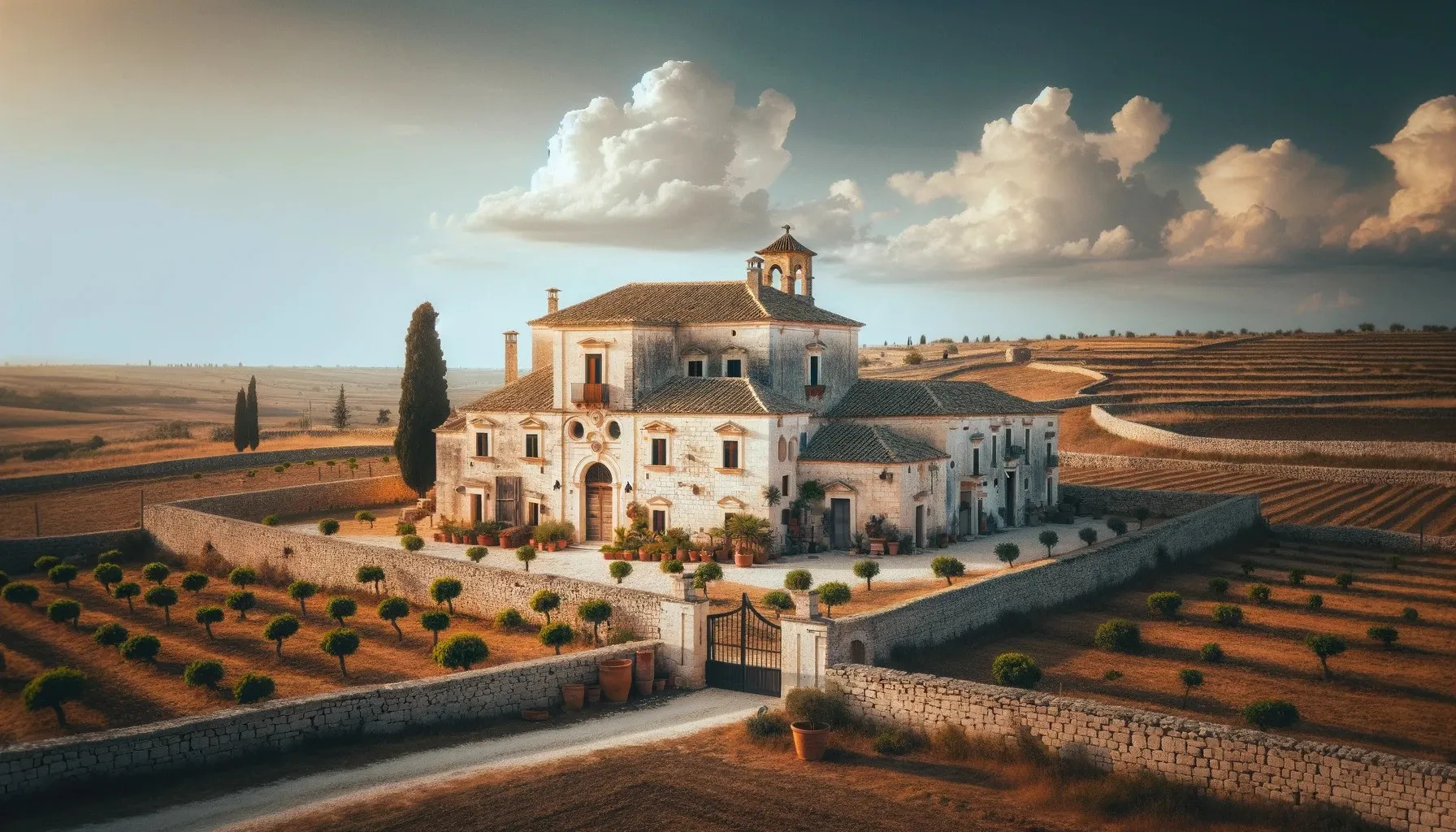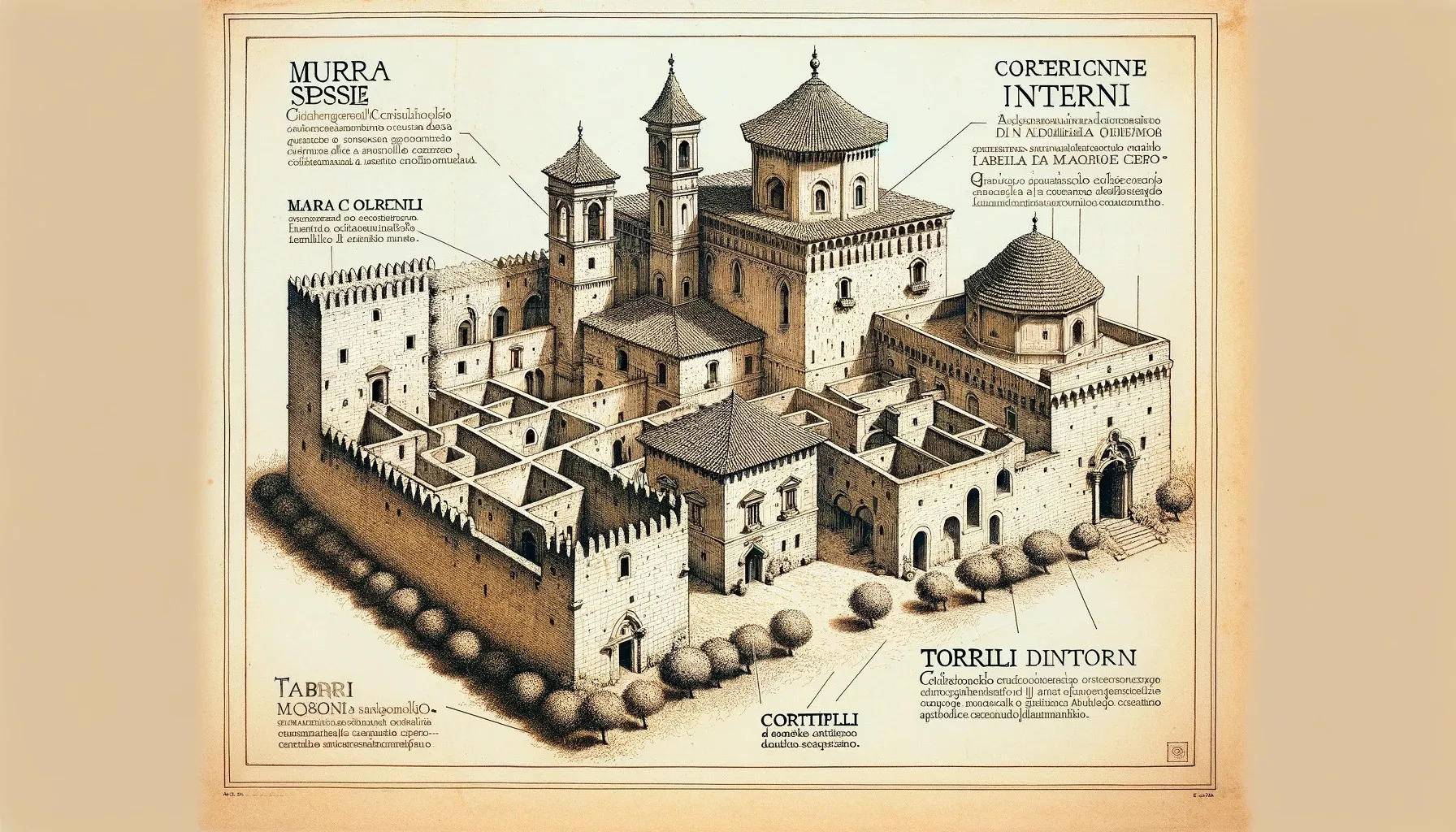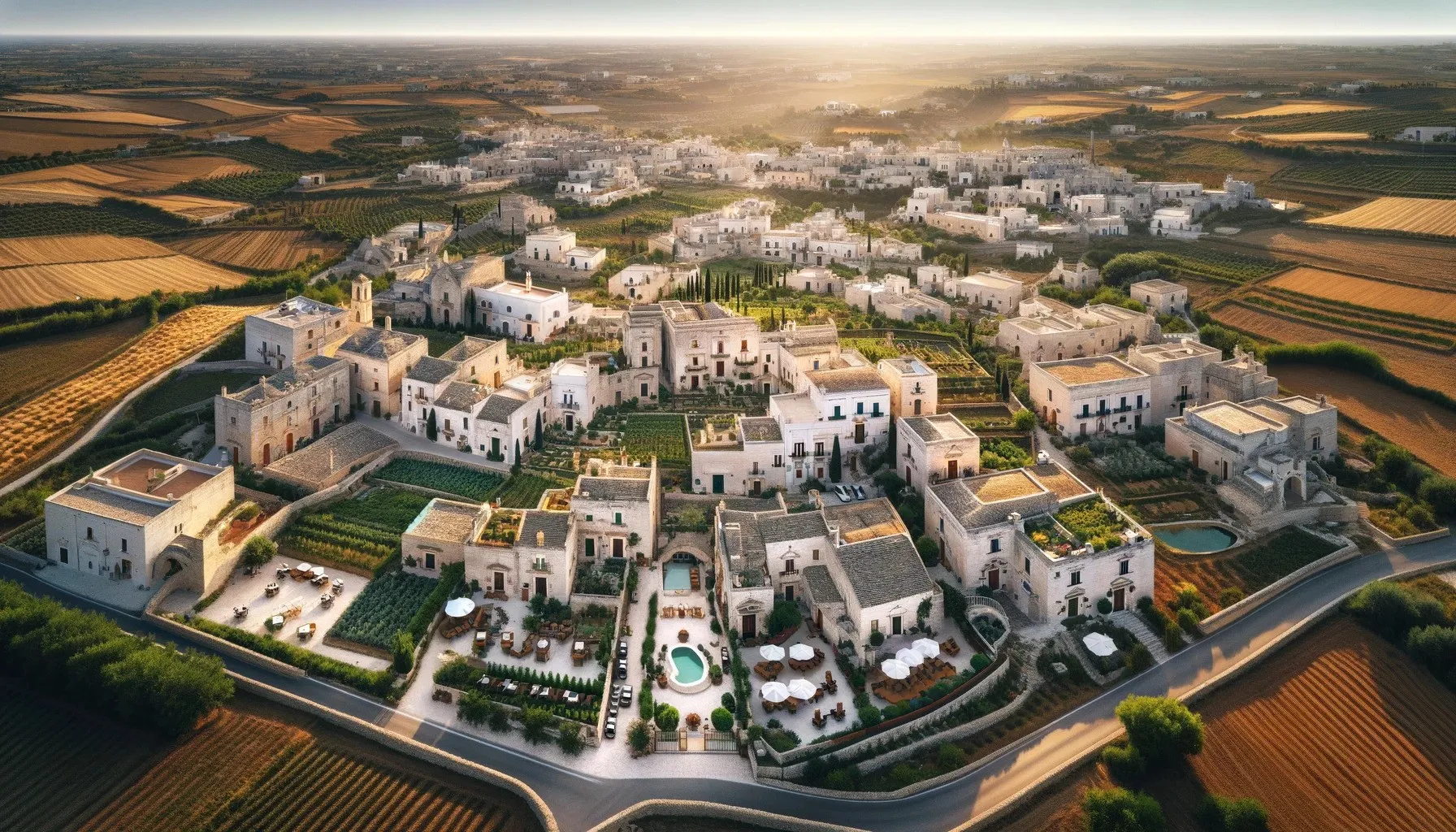Explore the Unique Architecture of the Apulian Masserie: Characteristics and History
Updated at: 17-04-2024

In the heart of the Mediterranean landscape, the Masserie of Puglia stand as a cornerstone of Italian rural architecture, blending history, design, and functionality into unique structures. Originating between the 16th and 18th centuries, these large agricultural estates have played a crucial role in the region's agricultural development and have become an indelible symbol of Puglia's cultural heritage. In this post, we will explore the distinctive features that make the architecture of the masserie a fascinating chapter in the history of Italian design.
History of Masserie in Puglia

The history of the Masserie in Puglia is deeply intertwined with that of the region itself. Originally designed to defend against raids and support agricultural economy, these structures have undergone significant transformations over the centuries. Their design, evolved to meet the needs of security, agriculture, and dwelling, offers a window into Puglia's rural past.
Architecture and Design of the Masserie

The architecture of Puglia's Masserie reflects their multipurpose function. Characterized by thick walls, internal courtyards, watchtowers, and chapels, these structures were designed to be self-sufficient. The design ranges from the functional minimalism of the oldest constructions to baroque influences in the more recent masserie, showing an evolution that embraces both aesthetics and practicality.
Distinctive Elements
- Thick Walls and Watchtowers: These features reflected the need for protection. The towers, in particular, were essential for early warning of potential dangers.
- Internal Courtyards: The heart of social and work life, courtyards served to gather animals, process the harvest, and socialize.
- Chapels: Every masseria had a dedicated chapel, signifying the importance of faith in the daily life of these agricultural complexes.
The Masserie Today: Between Conservation and Innovation

In recent decades, many masserie have been gently renovated, transforming into luxurious private residences, agritourisms, and boutique hotels. These conservation projects have emphasized the importance of keeping the historical and aesthetic character of the structures intact while introducing modern comforts and sustainable agricultural practices.
Cultural and Touristic Importance
The masserie of Puglia have become a pillar of tourism in the region, offering visitors a unique experience. Through tourism, these structures contribute to preserving and disseminating the rich cultural heritage of Puglia, while promoting a sustainable and nature-close lifestyle.
Conclusions
The architecture of the Masserie in Puglia is a treasure trove of design, history, and culture. These structures not only tell us stories of bygone times but continue to be a vital hub for innovation in the field of sustainable hospitality. Exploring the masserie of Puglia, we discover not just the beauty of Italian architecture but also the age-old practices that can teach us a lot about living in harmony with our land.
We invite our readers to visit Puglia and experience the magic of its Masserie Puglia firsthand. Whether you are a history enthusiast, a lover of design, or simply in search of an authentic and immersive experience, the masserie of Puglia have much to offer.